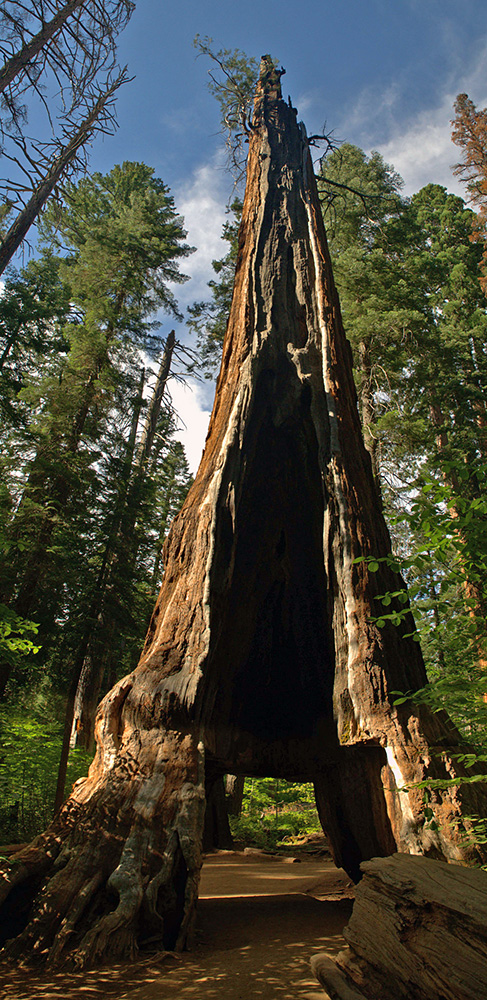
“These trees offer a lot to the forest (even) when they lie on the ground. They provide habitat for wildlife and they are still holding onto great (amounts of) carbon from the atmosphere, so they are part of a climate change solution.”
— Emily Burns, Director of Science, Save the Redwoods League, on 89.3 KPCC – Southern California Public Radio
The first giant sequoia were discovered by European settlers in the 1850’s in the area that is now Calaveras Big Trees State Park. News of their mighty size spread quickly, and people came from all over the world to get a glimpse of these mythical giants. But their fame came at a cost as their discovery also led to their destruction.
As people continued cutting the trees for lumber throughout their range, many others began to see the value in protecting the standing forests for their beauty and awe. In 1864, Mariposa Grove became the first protected giant sequoia grove. While giant sequoia were beginning to inspire protection in the southern part of the range, the trees at Calaveras were sold to a private landowner who, at the time, was debating on cutting them all down.
It was around this time, over 130 years ago, that the landowners instead elected to drill a hole through the trunk of the Pioneer Cabin Tree to attract tourists to the area. In the late 1800’s, a car could fit perfectly through the tree, and people came from all over to walk or drive through this living tunnel. As more and more people visited Calaveras to see the giant sequoia and the Pioneer Cabin Tree, sentimental feelings toward the grove gained strength. It was there that the outside world first saw the giant sequoia and where they fought hard for the forest’s protection.
Finally, that protection came in 1909 when Calaveras became a National Forest. Then again in 1931, the grove became a State Park with help from Save the Redwoods League. Over the years, the League has protected over 2,300 acres of Calaveras Big Trees State Park, assisted with building the new visitor center, and collaborated on forest restoration efforts. We continue to conduct active research in the park as we look at how these trees are responding to climate change.
These changes in the climate, which we have been experiencing over the past few years, have shown us that the giant sequoia are still growing strong. These trees continue to sequester carbon out of our atmosphere as they put on new wood every year. And even felled, the Pioneer Cabin Tree will continue to store that carbon in its wood for hundreds of years, keeping it out of our atmosphere.
Would this tree have survived the storm if it had not been cut? Possibly. But will the tree continue to play a role in its ecosystem? Definitely. While mother nature had a plan of her own for the Pioneer Cabin Tree, this icon and its surrounding forest demonstrate the resilience of these amazing trees and of the movement to protect these unique and inspiring places.
Related Resources:

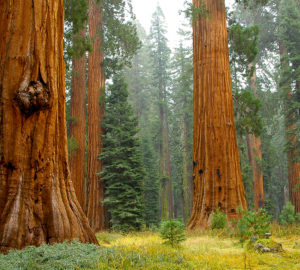
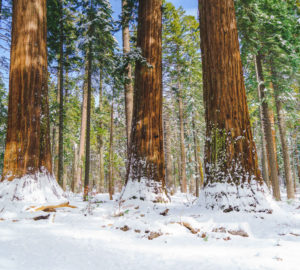
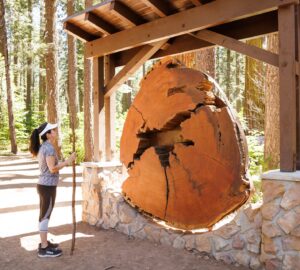
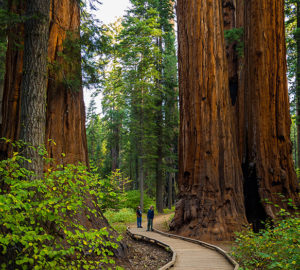
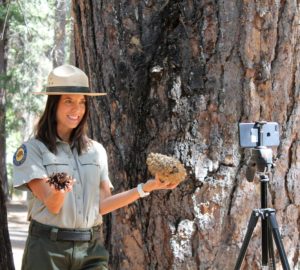
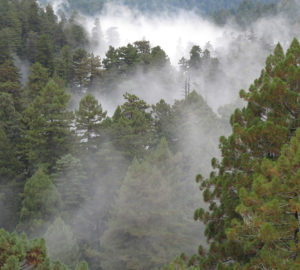
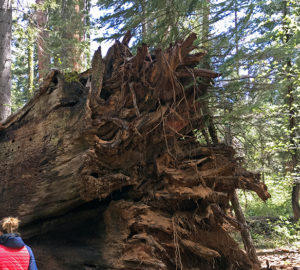
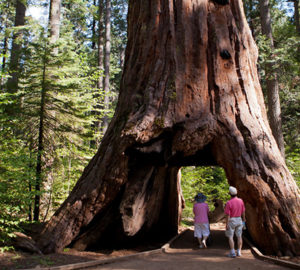
2 Responses to “Historic ‘Tunnel Tree’ Falls in Storm”
Brandon Schaefer
Great post and thoughts! It will be sad to see this tree no longer standing once I get a chance to go back there sometime soon. Luckily I was able to see it on three different occasions before it fell. Definitely shows how we need to protect these trees, instead of worrying about making tourist attractions and money.
Save the Redwoods League
Hi, Brandon. Thanks so much for reading and commenting on this story. We are so glad to hear that you have visited this tree on multiple occasions. I see beautiful redwood paintings on your website. Your talent and passion for redwoods shows! Feel free to contact us at webmaster@SaveTheRedwoods.org if you would like to share some of your work on our social media or otherwise (credited, of course).